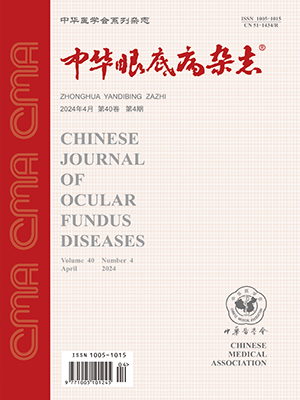Objective To observe the inhibitory effects of gene transfer of canstatin on retinal neovascularization in mice. Methods Fifty-six 7-day-old C57BL/6J mice were randomly divided into control group,oxygen-induced retinopathy (OIR) group, empty vector group and treated group,14 mices in each group. Except for the control group,the mice in the other groups were exposed to (75 plusmn;2)% oxygen for 5 days and then back to the normal air to establish the model of OIR. On postnatal 12 day, the treated group was received intravitreal injection of canstatin pCMV-HA, while the empty vector group was received the same volume of empty plasmid.The changes of retinal vessels were observed by Evans blue angiography on postnatal 17 day. With parafin section which stained by hematoxylin and eosin, then the number of endotheliocyte nuclei breaking throuhgh the internal limiting membrane(ILM) was observed and counted by optical microscope.Results Retinal blood vessels distributed regularly in treated group compared with OIR group and empty vector group.The differences of the number of endotheliocyte nuclei breaking throuhgh ILM in treated group was significant compared with the other two groups(F=39.006,P lt;0.001).Conclusion The canstatin pCMV-HA can effectively inhibit the retinalneovascularization in OIR.
Citation: 孟丽娜,董晓光,王晔,刘廷,张珊珊. Inhibitory effects of gene transfer of canstatin on retinal neovascularization. Chinese Journal of Ocular Fundus Diseases, 2010, 26(3): 215-218. doi: Copy




